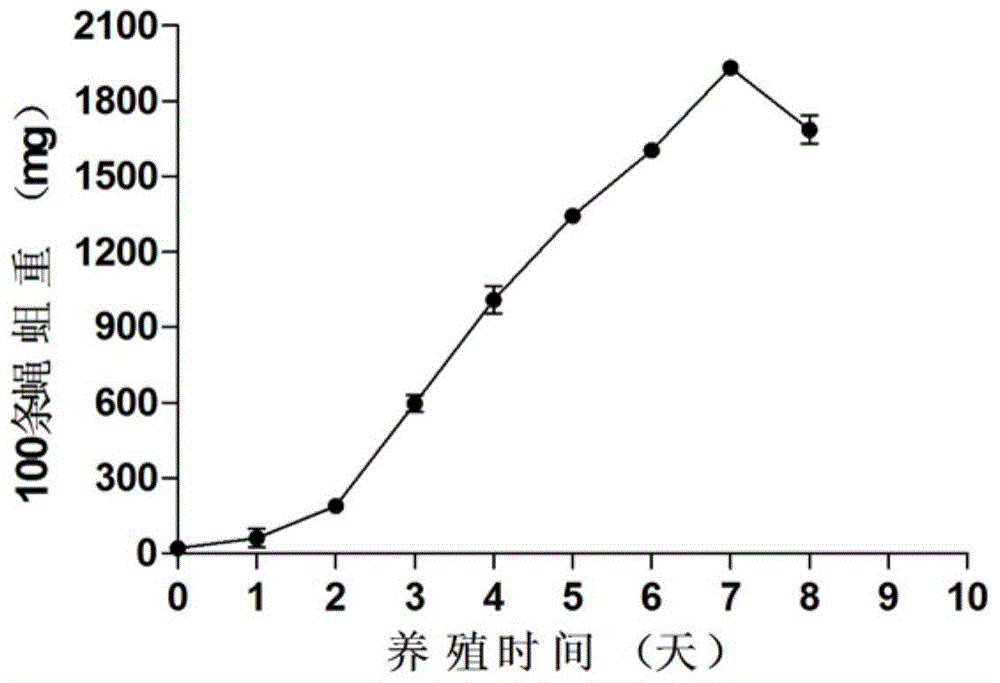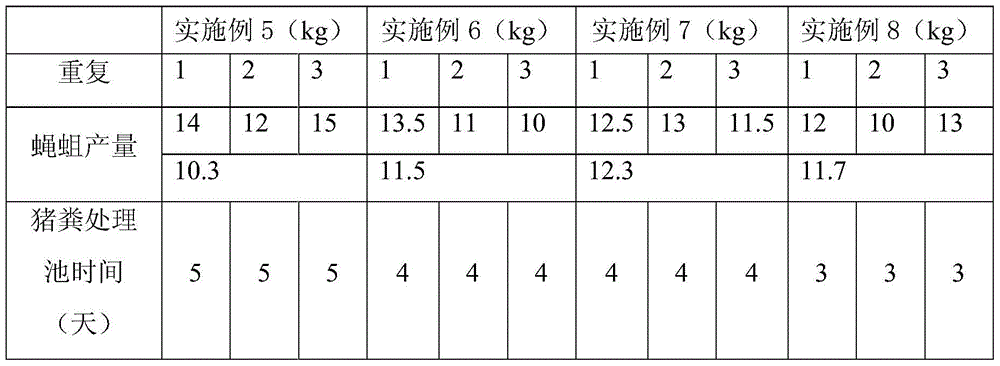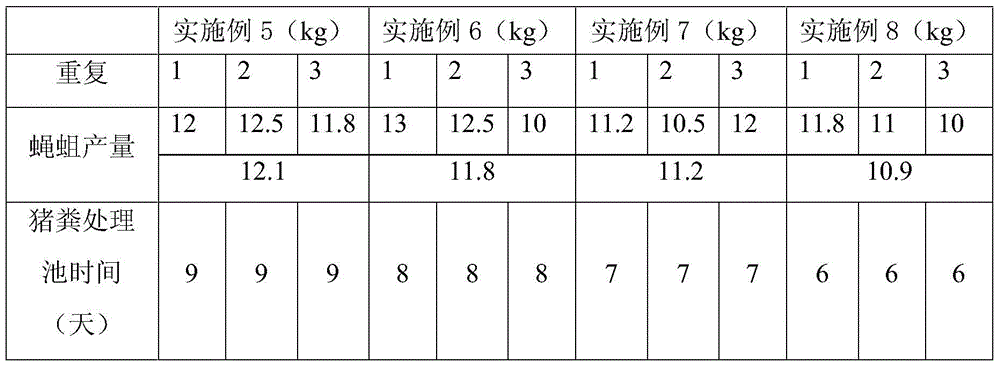Two-step cultivation method for fly maggots under normal temperature and low temperature conditions
A technology of low temperature conditions and breeding methods, which is applied in food processing, animal husbandry, animal feed, etc., can solve the problems of unfavorable growth of fly maggots, and achieve the effects of increasing the yield of fly maggots, improving growth conditions, and improving the growth environment
- Summary
- Abstract
- Description
- Claims
- Application Information
AI Technical Summary
Problems solved by technology
Method used
Image
Examples
Embodiment 1
[0024] The two-step breeding method for fly maggots is to place the hatched housefly larvae in a greenhouse for intensive treatment in spring; the specific steps are:
[0025] (1) Strengthening treatment stage
[0026] In the indoor breeding pond, pre-lay 5cm thick breeding material; then transfer the housefly larvae within 24 hours after hatching to the breeding material; during the breeding process, the indoor temperature is controlled to be above 20°C, and the breeding density of the housefly larvae 9.6×10 7 Bar / m 2 , breeding time 1 day;
[0027] (2) Ordinary breeding treatment stage
[0028] The housefly larvae after intensive treatment were taken out from the breeding pond and put into the biomass waste to continue breeding; during the breeding process, the temperature of the greenhouse was controlled above 10°C, and the maggot residue was separated after 5 days, and the fresh maggots were cleaned.
[0029] The breeding material is: a combination of livestock manure,...
Embodiment 2
[0032] The two-step breeding method for fly maggots is to place the hatched Chrysocephala larvae in a greenhouse for intensive treatment in autumn; the specific steps are:
[0033] (1) Strengthening treatment stage
[0034] In the indoor breeding pot, pre-lay 7cm thick breeding material; then transfer the Chrysocephala larvae within 24 hours after hatching to breeding in the breeding material; control the indoor temperature during the breeding process to be above 20°C, and the growth rate of the Chrysocephala larvae The breeding density is 9.6×10 5 Bar / m 2 , breeding time 2 days;
[0035] (2) Ordinary breeding treatment stage
[0036] The enhanced treatment of Chrysocephala macrocephala larvae was taken out of the breeding pot and put into the biomass waste to continue breeding; during the breeding process, the indoor temperature was controlled to be above 10°C, and the maggot residue was separated after 4 days to clean the fresh maggots.
[0037] The breeding material is:...
Embodiment 3
[0040] The two-step breeding method for fly maggots is to place the hatched blowfly larvae in a greenhouse for intensive treatment in winter; the specific steps are:
[0041] (1) Strengthening treatment stage
[0042] In the breeding pond in the greenhouse, pre-lay 10cm thick breeding material; then transfer the erythrophyll larvae within 24 hours after hatching to the breeding material for breeding; control the temperature of the greenhouse during the breeding process to be above 20°C, and the larvae of the red-headed blowfly The breeding density is 8×10 6 Bar / m 2 , breeding time 3 days;
[0043] (2) Ordinary breeding treatment stage
[0044] After intensive treatment, the blowfly larvae were taken out from the breeding pond and put into the biomass waste to continue breeding; during the breeding process, the temperature of the greenhouse was controlled above 0°C, and the fresh maggots were separated after 6 days to clean the fresh maggots.
[0045] The breeding material ...
PUM
 Login to View More
Login to View More Abstract
Description
Claims
Application Information
 Login to View More
Login to View More - R&D
- Intellectual Property
- Life Sciences
- Materials
- Tech Scout
- Unparalleled Data Quality
- Higher Quality Content
- 60% Fewer Hallucinations
Browse by: Latest US Patents, China's latest patents, Technical Efficacy Thesaurus, Application Domain, Technology Topic, Popular Technical Reports.
© 2025 PatSnap. All rights reserved.Legal|Privacy policy|Modern Slavery Act Transparency Statement|Sitemap|About US| Contact US: help@patsnap.com



